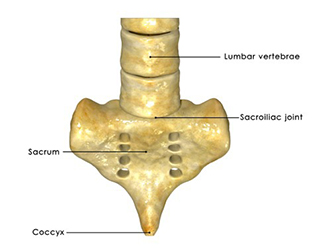A Pain in the Rear

The sacroiliac joint, SI joint, connects the hip bones (iliac crests) to the sacrum, the bone-shaped like a triangle between the lumbar spine and the tailbone (coccyx). The main function of the SI joint is to absorb shock between the upper body and the pelvis and legs and help to bend forward and backward. Strong ligaments and muscles reinforce the SI joint. It is estimated that the sacroiliac joint is responsible for 15% to 30% of lower back pain cases. SI joint dysfunction systems include:
- Pelvis pain
- Pain in the lower back and/or hip
- Pain on one side of lower back or buttocks
- Pain that radiates down the back of the leg
- Stiffness
- Muscle tension
- Limited mobility
- Inflammation
SI joint dysfunction may cause the inflammation or it could be the reverse. An infection, rheumatoid condition, or other condition could cause inflammation and SI joint dysfunction. Treatment for SI joint dysfunction focuses on alleviating pain and restoring normal motion. Most cases are successfully managed with non-surgical treatments:
- Rest 1 to 2 days
- Ice 20 minutes, 2 times per day, to reduce inflammation
- Heat to relieve pain and reduce muscle tension
- Anti-inflammatory medications (NSAIDs, ibuprofen or naproxen)
- Manual manipulation by a chiropractor or physical therapist to reduce joint fixation and muscle tension
- A pelvic brace to stabilize the area
- Corticosteroid injection to reduce inflammation and alleviate pain
No single approach manages SI joint pain for all DOC guests. Discuss symptoms and medical history with the orthopedic experts to determine if SI dysfunction is an accurate diagnosis and begin conservative treatment.
For more information on the cost of care, click here.




